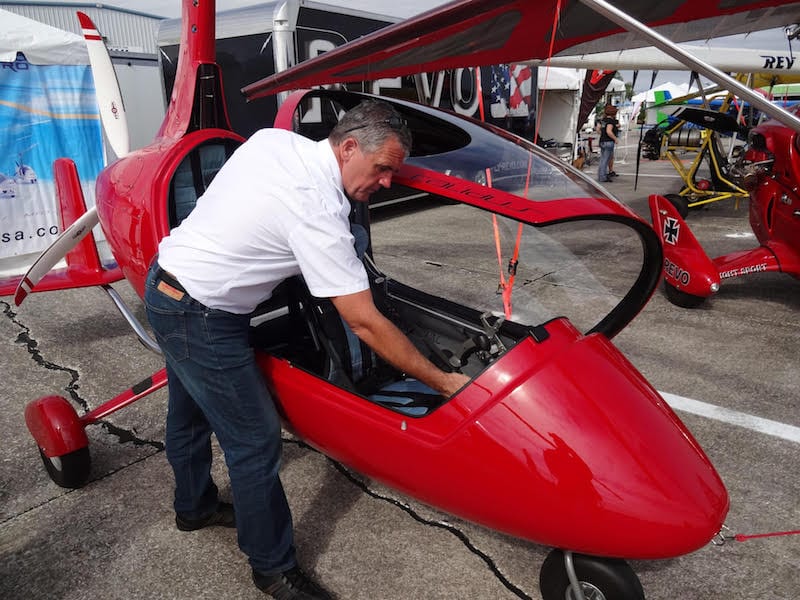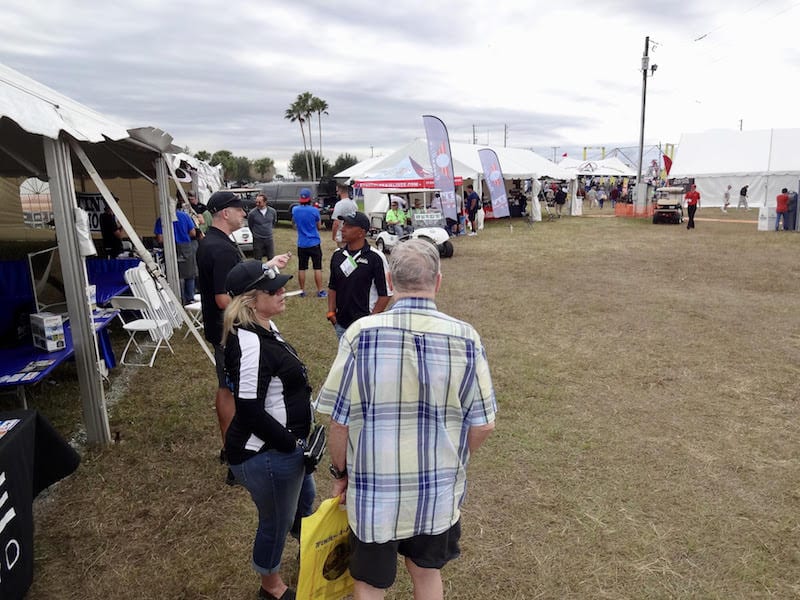The high pitched buzz of drone racing was among the new sounds of the 2017 U.S. Sport Aviation Expo, held Jan 25-28 at the Sebring Regional Airport in Florida.
The drones were being flown by a cadre of 3-D goggled pilots through a Red Bull like fenced-in closed course at astounding speeds, reportedly up to 80 mph. That is, until they crashed into a course obstacle. But, not to worry, just grab a screwdriver and a new set of rotors and get back into the game.
Good thing, because the grand prize for the event was $10,000 and 120 drone pilots from all over the world came to compete.
While they guided their tiny aircraft through pylons to victory, potentially millions of racing fans at home streamed the event live via First Person View (FPV) TV.
Drone racing at this year’s Expo was a popular new feature, attracting a much younger crowd than normally populates the show. The Drone Zone at the Expo took up nearly a quarter of the entire event and was a major draw.
But that’s not all that was new this year. The layout of the Expo was entirely different from years past and show attendees reported it was a big improvement.

Instead of separating the exhibits from the commercial side of the airport, they were now squarely in its center. Two of the Sebring Airport’s biggest general aviation tenants, Lockwood Aviation and Tecnam, opened their hangars and welcomed visitors.
Grand entry was provided through the airport’s attractive terminal building after show goers were shuttled from remote parking.

Manufacturers showed off their new aircraft facing each other in two long lines that stretched from the terminal building to the drone zone, making it easy for visitors to go from exhibit to exhibit and not miss anything.
Best yet, the exhibits were adjacent to a taxiway which, during the show, doubled as an active runway for demonstration flights. Everything this year seemed much more up close and personal.

Much of the difference was attributed to new Expo Director Beverly Glarner. When the previous show director resigned after several disappointing years of weather problems that affected the Expo’s success, a decision was made by Sebring airport officials not to replace her, as such. Instead, Glarner, then the executive assistant to the Sebring airport director, was given the job of heading up a new team of Expo planners.
Brainstorming led to the changes that were obvious during this 13th annual session. Besides the revised exhibitor layout and addition of major drone participation, a heavier emphasis was put on youth programs with several female and minority pilot role models and more involvement by aviation notables, such as Patty Wagstaff and Rod Machado.

The Experimental Aircraft Association brought in its educational outreach exhibition trailer, specifically set up to interest youngsters in aircraft building. A big hit at the trailer was the virtual reality 3-D video the EAA had specially produced to demonstrate the experience of touring the EAA Museum at Oshkosh, Wisconsin, and featured a virtual helicopter ride around the grounds — all that visible through VR headsets.

The Expo also arranged a tie-up with a local hospital that supplied physicians for aviation medicals. Biplane and helicopter rides were available.
Taking advantage of the Expo’s being adjacent to the famous Sebring International Speedway, visitors had the chance to take a track demonstration drive in a new Fiat Chrysler car. The course was designed to show off the vehicle’s handling characteristics and wound around the entire circuit. A free T-shirt was your participation prize. There also were attractions for aviators and aviators in waiting.

The Sport Aviation Expo has been a reflection of the light sport side of aviation since its inception, earning the nickname the Sebring LSA Expo. Each year it is common to see new aircraft come onto the market and be displayed. At the same time a few have disappeared from the scene.
Branches of the industry have tended to find their own niches and grow to popularity. This would include weight shift, or trikes, and gyroplanes. While it has been possible for years to buy factory built trikes, only now can a gyroplane pilot purchase a factory manufactured unit.
These rotorcraft were registered previously in the experimental category and required owner participation building a kit. No gyroplanes were available under the FAA’s factory manufactured Special Light-Sport category.

Now the German Autogyro company has certified its Calidus gyroplane in the FAA’s primary category, not light sport, making it possible to purchase a factory built aircraft. The Calidus is built in the German factory, test flown, then disassembled, shipped to the U.S. and reassembled at the company’s location in Maryland. The tandem seat Calidus features the Rotax 912 or 914 engine and an enclosed canopy. It’s sleek appearance has made it one of Autogyro’s most popular models.
Another newcomer to Sebring was the Skyrunner. Literally a powered parachute, it’s a dune buggy-like vehicle with a Rotax 914 engine and Warp Drive propeller for airborne propulsion, and a Ford Ecoboost 1.0 liter engine to drive the wheels upon finding the earth.

It claims rapid acceleration and a 70 mph ground speed with around 40-50 mph in the air. Its rugged, angular looks put it at home with the biggest and baddest all terrain vehicles, but it flies.
The fly-by showcase at Sebring was reasonably busy, even though staffers in Air Ops indicated that the number of companies attending the daily briefings to reserve time slots was lower than in past years.

The Expo program guide listed 84 inside and outside exhibition areas reserved and the Drone Zone showed an additional 22.
The Expo finally got a break in the weather this year with milder temperatures and calmer winds than in the recent past.
The Sebring show team looked for around 27,000 attendees to pass through the terminal during the four-day event. They believe this year’s changes will serve them well for the future.





GREAT – But does anyone REALLY “buy” anything?